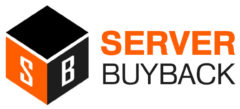Electronics waste, generally known by the names e-scrap and e-waste is the waste that is produced from superfluous, wrecked, and outdated electronic devices. E-waste, or electronics recycling, is the practice of recovering materials from old devices to use in new products.
What happens when the devices reach the end of their useful life?
Unfortunately, most of these electronic products usually end up in landfills, and only a small percentage are used in new electronic devices. It was estimated that in the year 2016, 44.7 million tons of electronic waste (e-waste) were discarded globally, with just 10 to 40 percent of disposals carried out properly.
Electronics consist of valuable materials like iron, aluminum, fossil fuels, copper, tin, titanium, gold, and silver. Most of the materials that are used in making these electronic devices can be recovered, reused, and recycled, including plastics, metals, and glass.
The E-Waste Recycling Process
Since electronic waste comprises a range of materials, like glass, plastics, and metals, recycling e-waste comprises numerous steps to utilize these resources in the most proficient way.
Generally, both manual labor and automation are involved in the electronic waste recycling process. The use of automated equipment at the time of the recycling procedure helps to capably recover the reusable materials, get away with the perilous waste, and safeguard both the workers and the environment.
The steps involved in E-Waste Recycling are:
- Picking: The equipment is physically sorted, and the components that do not need to be shredded or crushed are separated by hand. These include toner cartridges, UPS battery systems, batteries, and fluorescent lights.
- Shredding: An Initial Size Reduction step is carried out to shred the electronic objects into small 100-mm-size pieces, followed by a Secondary Size Reduction step that further breaks down the stuff into smaller segments that are suitable for the separation process. The dust, if extracted during this course, is disposed of using environmentally friendly methods.
- Magnetic Removal: In this step, the steel and iron segments are detached using the magnets.
- Metallic and Nonmetallic Separation: Other metals, like copper, aluminum, and brass, are alienated from non-metallic materials, including glass and plastic. This separation takes place with optical identification, Eddy currents, and magnets.
- Separation by Water: Plastic and glass are then separated with the help of water. The glass that contains lead is sent to lead smelters to be used for making new products like batteries, x-ray shields, and new CRTs. Plastics are separated color-wise and sold to plastic recyclers for their use.
Once the entire raw material has been separated, these are sold to the recyclers as their supplies and to the manufacturers for producing new electronic devices or any other items they are involved in.
Circuit boards are earthed and smelted, the gases are caught, and the metals are sold in the form of raw materials. The wood present in the older television cabinet models is chipped and burned as biofuel.
The CRT Recycling Process
As the Cathode Ray Tubes (CRTs) that are in computer monitors and old televisions hold a great number of toxins like lead, which can be hazardous to human health as well as the environment, recycling these devices needs a different process than most other electronics.
The CRT Recycling process consists of:
Cathode Ray and Monitor Body Separation: The frontage of the monitor or television needs to be removed to get away from the CRT inside, and the outer case of the monitor or television needs to be recycled along with the other e-waste.
Size Reduction: The screens and the CRT tubes are shredded into minute pieces, and the glass dust is eliminated with the help of environmentally friendly methods.
Metal Removal: By bringing the magnets into use, iron and steel are detached from the broken-down pieces, and then aluminum and copper are separated by transiting the remaining material through Eddy currents.
Washing: Any outstanding glass remains are cleaned to get rid of the phosphors, oxides, and any dust extracts, leaving the glass clean so that it can be sorted the final time.
Glass Sorting: In this step, the leaded glass is separated from the unleaded glass. Both of these glasses can be used to produce new screens. Lead-containing glass can also be helpful to the smelters in making new products like CRTs, batteries, and x-ray shields.
Thus, the greatest e-waste recycling systems comprise self-reliant recycling processes after the preliminary manual separation, along with the autonomous collection of raw materials to be transported to the relevant manufacturers. This guarantees safety for both humans and the environment.
From this, it might be clear that electronic waste recycling is not an effortless process. So, Server Buyback provides E-Waste recycling services. All you need to do is give us a call or drop us an email. We help you recycle your electronic waste in the right way and help you get away with leaving these toxic materials in landfills, harming the surroundings for future generations, particularly when these can be recycled.

